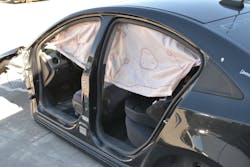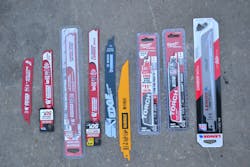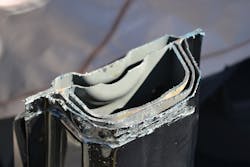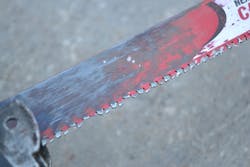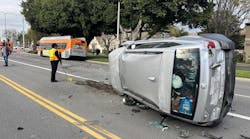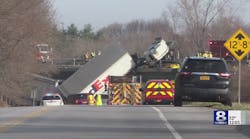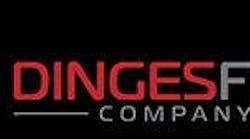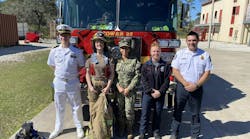Topic: Ultra-High-Strength Steel (UHSS)
Objective: The rescue team acknowledges its reciprocating saw, with an appropriate blade, is a tool that’s capable of cutting automotive boron-type steel
Task: The rescue team shall ensure that it has a variable-speed corded reciprocating saw, multiple blades that are proven capable of cutting UHSS, or boron-type steel, and a trained saw operator who is available for cutting boron-type steel that’s encountered on vehicles
Some time ago, this author became aware of and interested in how automakers use advanced high-strength steels (AHSS), including in the 2010 Chevrolet Volt. The 2010 Volt includes both AHSS and ultra-high-strength steels (UHSS), which are steel compositions with which most, if not all, who were in the fire/rescue service at that time lacked familiarity. (The yield strength of AHSS starts at 551 MPa; AHSS that have a yield strength greater than 780 MPa are referred to as UHSS.) In fact, the 2010 Volt’s entire B-pillar, rocker, most of the roof rail and upper A-pillar have at least one layer of AHSS.
Upon investigation, we learned then that this stronger boron-type steel is very crashworthy—as well as resistant to cutting by the power rescue tools of that time. (Although boron is only one type of special steel, the term “boron-type steel” is recognizable to most fire/rescue responders in relation to AHSS and UHSS.) We, as fire and rescue responders, were behind the curve and needed to catch up very quickly because of the materials’ use in vehicles.
By adapting and evolving extrication techniques, along with the upgrade of hydraulic cutter tools, we seem to be much better prepared today than we were in 2010 to deal with the advanced steels in vehicle structures at a rescue incident. However, for departments that don’t have a power cutter or for a case in which a backup means of cutting is required, reciprocating saw cut-testing was conducted in the fall of 2021, and it revealed new information that rescue personnel, rescue officers and, particularly, vehicle rescue instructors should know.
Choices of reciprocating saw blades that were able to cut through boron-type steel in 2010 were limited primarily to just carbide-tipped versions from Diablo and Lenox. These blades remain available, but they’ve been joined by a host of other brands of blades, many of which display a red firefighter helmet on their packaging or on the display at the point of sale.
If blade technology was evolving to the extent that reciprocating saw blades were improving enough to market to fire and rescue personnel, this needed to be checked out. Are any of the newest reciprocating saw blades capable of cutting through boron-type steel pillars on vehicles?
For the testing, reciprocating saw blades were purchased at retail outlets and included blades from Bosch, Diablo, Lenox and Milwaukee. Both 6- and 9-inch blades were purchased, particularly if their packaging indicated that the blades were carbide-tipped and/or designed for cutting thick metal or had a red firefighter helmet.
A crash-damaged 2016 Chevrolet Cruze was made available for the cut-testing. The driver’s side of the vehicle had no front or rear door. Both roof-mounted airbags were deployed. The engine, transmission, suspension system and rear axle were removed.
What was so good about this sedan for our purposes was that the roof rail, upper A-pillar and all of the B-pillar consisted of multiple layers of AHSS.
Working completely independently— meaning not sponsored or supported by any rescue tool company, reciprocating saw company or reciprocating saw blade manufacturer—a series of cut-tests were conducted to see whether various reciprocating saw blades would cut the boron-type structure portions of the vehicle. The same six-speed reciprocating saw and the same saw operator were used. The only difference between one cut and the next was a blade change and a slightly different location on the body of the vehicle.
The speed of the reciprocating saw was set on 4. (After the fact, speed selection faster than that seemed to waste the blade and actually slow the cutting.)
There was no need for lubrication at the cut point. (It would be difficult to justify the need for a rescuer to apply soapy water or other lubrication when there was no significant difference in results.)
The cut-testing started with one of the two blades that previously were known to be able to cut through the boron-type steels. The Diablo 8-teeth-per-inch (tpi), 9-inch blade (less than $14) performed well. It cut through the boron-type steel B-pillar near the roofline where the pillar was 5½ inches wide and approximately 5 inches thick. The cut was accomplished in approximately two minutes, which has become the benchmark “normal” time for completing this task with a reciprocating saw.
Close examination of the blade after the cut-testing revealed significant tooth damage and the loss of many of the teeth. This rendered the blade out-of-service for any additional cutting.
The third cut-test used a $12 Milwaukee Torch blade that has carbide teeth. The blade was 6 inches in length, had a very course 7-tpi design and was labeled for thick metal. During cutting of the B-pillar near its wide midpoint, the blade yielded the roughest cutting action for both the saw and the saw operator. As the blade cut, the operator had to be aggressive in handling the saw to maintain control.
It’s believed that the course 7 tpi is too rough for severing the pillars. It’s recommended that at least an 8- or 8/10-tpi blade be used for extrication work.
In addition, it was found that the short 6-inch length wasn’t sufficient to get completely through the B-pillar on all sides. A 9-inch blade is the preferred length for cutting a B-pillar at its mid-to-lower areas.
A fourth cut-test used the $16 Lenox #9108RCT blade, which is an 8-tpi, 9-inch, carbide-tipped blade that’s labeled for thick metal. The blade was tasked with cutting through the B-pillar at a low point just above the bottom door-hinge mounting area.
The cut was completed without any notable problems, although the 9-inch blade did contact the side of the driver’s seat several times as the blade was worked into various positions. This length of blade, cutting this close to a trapped patient, would require positioning a solid patient-protection device to prevent the patient from being contacted by the blade.
Confirmation
There are multiple choices of commercially available reciprocating saw blades that will cut through the AHSS and UHSS that are found in many of today’s automobiles. All four blades that were used in the tests cut through the boron-type steel pillars, although with varying degrees of effort.
The bad news, if you want to call it that, is that the time that it takes to cut through a multilayer boron-type steel pillar with a reciprocating saw (approximately two minutes) is significantly longer than the elapsed time for a latest-generation power cutter to cut the same pillar (20 seconds). Also, the saw blades showed visible wear after their two minutes of cutting, so reality might say that a fresh blade and a replacement saw operator will be needed for each boron-type steel cut with a reciprocating saw.
All that said, use of a corded, variable-speed reciprocating saw that has a good blade by a knowledgeable operator remains a viable tactic for cutting AHSS and UHSS pillars. Believe in having a backup plan for every possibility that you might encounter.
